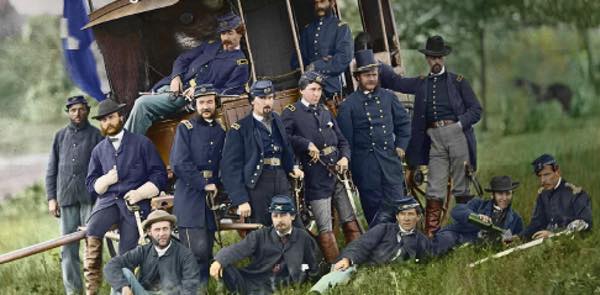Sat 6/12 @ 2-4PM
Former Plain Dealer reporter Laura DeMarco spent many of her childhood vacations visiting historic sites, including Civil War sites, with her American history buff parents, driving through New England, the South or the Washington D.C. area in the family station wagon.
Buy the time she left the PD in early 2020, she already had three books to her credit — Lost Cleveland, Cleveland Then and Now, Mark Twain’s America Then and Now. With her interest in history and background in the Civil War, a subject that particularly fascinated her father, it was natural that the next would be LOST CIVIL WAR: The Disappearing Legacy of America’s Greatest Conflict, out this week. She’ll be doing a book signing at Prosperity Social Club in Tremont Saturday June 12 @ 2-4pm, where food & drink will be available and there’ll be a Civil War trivia contest.
“Prosperity Social Club is a historic venue located very close to one of our city’s most famous Civil War site, Camp Cleveland,” says Prosperity owner Bonnie Flinner. Hosting a book launch here is very fitting.”
The book revolves around more than 200 vintage photos (some colorized for greater impact) offering glimpses of sites that no longer exist, mostly consumed by development: battlefields, encampments, signal towers, prisons, hospitals, arsenals, soldiers homes, railroad depots, ships, and even a cyclorama. She offers background on each and its role in the war, and sadly, casualty figures that make one reflect on what a waste this conflict was, especially given its underlying impetus (no, it wasn’t “states rights.”)
“Many of the sites made a great impact on me, but I think seeing Gettysburg and hearing about how many young men died in such a short time on those fields had a particular impact,” she says. “I also think my parents inspired me to be aware that history never really dies, its all around us and impacts contemporary life everyday. This is especially true with the Civil War.”
DeMarco points out that this was the first war that was photographed, where battles weren’t glorified in after-the-fact paintings. The piles of broken bodies, the brutal living conditions, the destroyed landscapes were all depicted not just by the legendary Matthew Brady but by a number of other photographers as well, bringing the war home to people far from the battlefield. Since most of their work is in the Library of Congress, DeMarco says she did most of her research there but she also contacted historical societies, libraries, universities and National Park sites. (Some of the locations are not located in National Parks).
“I hope that viewers [of the photos] realize that the Civil War was the single most important event in American history, and continues to shape life in America to this day,” she says. “And yet, every day, bits of this history are being lost, mostly through neglect and suburban sprawl: battlefields where thousands died are paved over; the hospital where battlefield medicine began in America is now the site of a Sheetz; or the fort in Louisiana that became home to a cult before being destroyed by Hurricane Katrina. Stories are being forgotten, too, such as how Irish immigrant women, and women in general, worked so hard in munitions factories to help with the Federal war effort. Ultimately, I hope this books helps keep the stories of those places alive, and inspire readers to go out and learn more about the Civil War, since everything is not taught in textbooks.”
